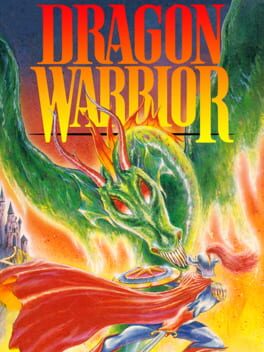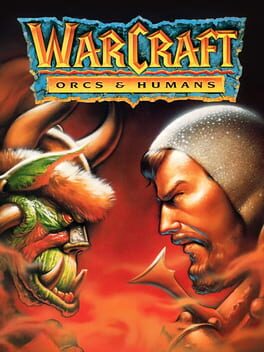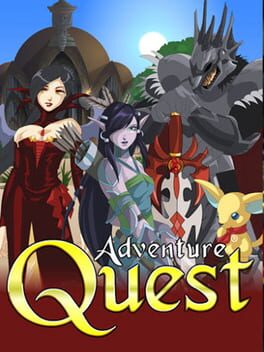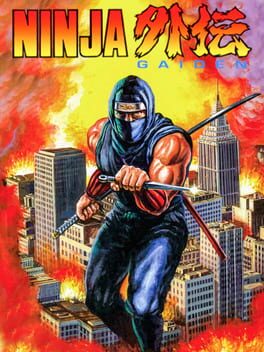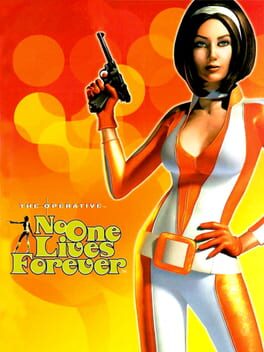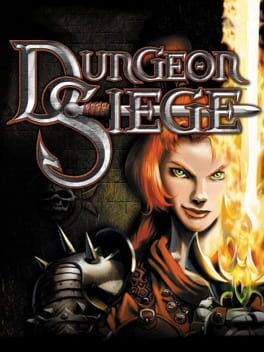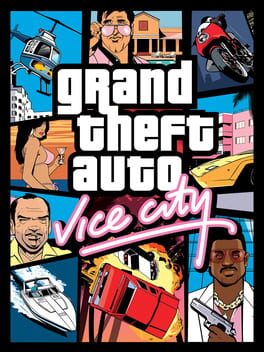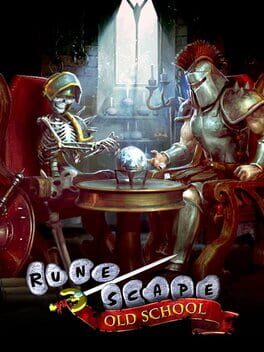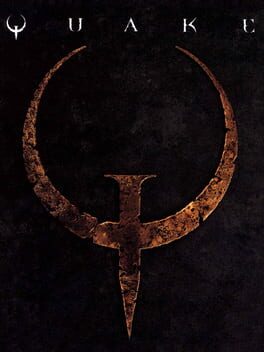KagamiClassic
1986
Experience farming turned into an art form. Widely considered outdated and tedious, the design of Dragon Quest/Warrior is actually increasingly relevant with the proliferation of "incremental" RPGs intended to waste time on phones and browsers. Yes, the majority of the gameplay is spent repeatedly fighting monsters and waiting for the next level-up. However, I have always considered so-called "grinding" to be a legitimate mechanic for RPGs that can be utilized well or badly. Dragon Quest games in particular stand out as beacons of well-paced progression, where you are obstructed not by artificial barriers or long story beats but the simple necessity to survive the route to the next town. As soon as you start this game, basically the entire overworld is open to you, you are simply far too weak to reach beyond a small stretch surrounding Tantegel Castle. The evil Dragonlord's fortress is visible just across the river, shamelessly teasing the player. The core of the game consists in becoming strong enough to actually walk all the way there and survive the encounters. This simplicity, only broken up by a couple of optional side quests, is what cements this as a classic experience. Any frustration the player might feel after dying is heavily mitigated due to the mechanic of losing half of your gold and being revived in Tantegel castle. Essentially, you are always gaining experience, whether you die in the final stretches of a dungeon or five tiles away from a town. This simple design choice streamlines the game enough to be compulsively playable more than thirty years after its release. The American NES localization of the original Dragon Quest was already a sort of remaster, giving the player battery saves and some improved sprites, and removing the tedious necessity of choosing a direction every time you talked to a NPC (rotating character sprites were apparently not invented in 1986).
Simply put, this game is incredibly charming and evokes the feeling of a medieval fairy-tale, something that would thankfully persist in future sequels and form one of the core attractions of the series. When it comes to the Japanese RPG genre which this game largely inaugurates, I have found that less is usually more, and extended plotlines or fancy combat animations would only harm the integrity of this experience. The entire game can be finished in about 12 hours, which decisively refutes the complaints aimed at the slow character progression - after all, I would rather replay Dragon Warrior than a plodding, 100-hour monstrosity frequently found among the later incarnations of the genre. It may not be the best RPG found on the NES (that honor I grant to Dragon Quest 3) but there's never been anything else quite like it.
Results:
Completed the localized NES release and a fan translation of the SNES remake
Simply put, this game is incredibly charming and evokes the feeling of a medieval fairy-tale, something that would thankfully persist in future sequels and form one of the core attractions of the series. When it comes to the Japanese RPG genre which this game largely inaugurates, I have found that less is usually more, and extended plotlines or fancy combat animations would only harm the integrity of this experience. The entire game can be finished in about 12 hours, which decisively refutes the complaints aimed at the slow character progression - after all, I would rather replay Dragon Warrior than a plodding, 100-hour monstrosity frequently found among the later incarnations of the genre. It may not be the best RPG found on the NES (that honor I grant to Dragon Quest 3) but there's never been anything else quite like it.
Results:
Completed the localized NES release and a fan translation of the SNES remake
Fascinating to experience for the historical value, this is the next step of RTS design after Dune 2. You can actually select multiple units (as much as four!) and there are two resources to manage. Although there are two campaigns, they are basically parallels of each other - you will play the same maps, just starting on opposite sides. What surprised me is the amount of missions where you can't build anything and have to complete the objective with the units given to you - this is common practice for later games in the genre, but for one released in 1994 I was expecting every map to be a base construction affair. If you're willing to get used to the ancient interface, there is fun to be had in following the simple but effective plot and overcoming entrenched opponents. With regard to balance, this game does not succeed - humans are simply more powerful with the ability to heal units, and indeed the sheer number of healers will be your primary obstacle in the Orc campaign. However, I did find the Orc units undeniably more charming. Charm is, to be sure, the primary currency of this game - the sprites are colorful and units bursting with personality, at least until you're sick of the repetitive voice lines. There is a spark of greatness here, one that is worth uncovering for fans of the genre. Just get used to holding that CTRL key.
Results:
- finished both campaigns
Results:
- finished both campaigns
1986
2002
1988
NES release:
The game is a good, but fair challenge on the first five levels. Then the final stretch of the game is an absolute nightmare that requires extreme patience. Almost gave up on completing this without save states, but I managed in the end. The choice to push you back to 6-1 after losing to one of the bosses is heartless sadism.
The gameplay in general holds up, Ryu controls smoothly and encourages fast acrobatic speedruns.
The game is a good, but fair challenge on the first five levels. Then the final stretch of the game is an absolute nightmare that requires extreme patience. Almost gave up on completing this without save states, but I managed in the end. The choice to push you back to 6-1 after losing to one of the bosses is heartless sadism.
The gameplay in general holds up, Ryu controls smoothly and encourages fast acrobatic speedruns.
As if the best Bond movie was stretched into one of the classiest games of all time. Comedic, stylish, hilarious. Absolutely my favorite female protagonist. Some things will be improved in the sequel, notably the stealth gameplay, but this is a standout experience with a lot of variety. The fact that it hasn't been re-released is a sin of the gaming industry.
2017
2002
Playing like a mix between Diablo and a squad-based RTS, Dungeon Siege remains an extremely compulsive game to this day. You're given a slew of options to customize your party's behavior in combat, to the point where it's possible to sit back and only occasionally intervene, perhaps to resurrect a fallen comrade or cast a debuff. This level of automation was criticized by some reviewers at the time, who argued it made the experience trivial. However, if you play DS on Hard difficulty and perhaps avoid filling all eight party slots, you're probably going to die a lot. Still, this is a mostly relaxing game where your level of involvement depends entirely on you - it's possible to make wacky class combinations with the right balance.
There are undeniably tedious moments in the game, and some dungeons seem to stretch on forever. But the sheer relief of finally emerging in the light of day, every single inventory crammed with loot, is the kind of catharsis I've not experienced in any other game. What Dungeon Siege manages to accomplish is feel like a robust, world-spanning journey, without easy shortcuts and convenient "teleport to merchant" abilities. All that remains is pushing forward, numerous environments and thousands of monsters separating you from the source of evil. And it just works.
Results:
- Ehb campaign, once on Normal and once on Hard
There are undeniably tedious moments in the game, and some dungeons seem to stretch on forever. But the sheer relief of finally emerging in the light of day, every single inventory crammed with loot, is the kind of catharsis I've not experienced in any other game. What Dungeon Siege manages to accomplish is feel like a robust, world-spanning journey, without easy shortcuts and convenient "teleport to merchant" abilities. All that remains is pushing forward, numerous environments and thousands of monsters separating you from the source of evil. And it just works.
Results:
- Ehb campaign, once on Normal and once on Hard
1993
2013
I only play this in F2P mode but it's still good fun every once in a while. World 301 can have the wildest player interactions. My biggest issue with the OSRS community is that it's full of extreme bigotry, if you play this as a woman or a queer person you will get harassed sooner or later. Reporting seems to have no effect, so without a friend group to play with you are likely stuck with idiots. I'm apparently a glutton for punishment though, since I keep coming back.
1996
2009
If, like me, you're addicted to Diablo-likes and need another hit, this is a solid choice. Gameplay mechanics are very similar to Fate (2005) from the same developer, but combat is punchy and polished. Similarly to Fate, the plot is very generic and not worth mentioning. The visual style is cute and has aged well for the most part. Sadly there isn't much to stick around for after you beat the final boss - technically there is an infinite dungeon to explore and farm in, but I gave it up after a few floors of the same thing. Initially it might seem like there is a ton of loot variety, but I noticed very similar drops when playing with other characters.
Results:
Finished the campaign with Vanquisher, post-game is boring
Results:
Finished the campaign with Vanquisher, post-game is boring
The Wolfenstein franchise doesn't evoke nearly as much love from the gaming public as Doom, but the underlying setting is, at least, pure classic. Nazis and occult phenomena have combined perfectly at least since Indiana Jones. I don't expect the theme to disappear any time soon.
RTCW is a childhood game I've finished so many times that I've lost count, so it's pretty hard to place it in its context. When compared to the deluge of quality FPS games of the early 2000s, this may not be some eternal classic of game design, but it's a solid campaign. The game almost feels like a transition from more traditional shooters to heavily scripted affairs that would become familiar in a few years (there are secrets to be found and nazi gold to be collected, among other things). The enemies will absolutely kick your ass and force you to make use of the quicksave key. Plus, I love the Quake 3 Engine.
Multiplayer is what cemented this game's status for years to come, but after the release of Enemy Territory it's essentially obsolete.
RTCW is a childhood game I've finished so many times that I've lost count, so it's pretty hard to place it in its context. When compared to the deluge of quality FPS games of the early 2000s, this may not be some eternal classic of game design, but it's a solid campaign. The game almost feels like a transition from more traditional shooters to heavily scripted affairs that would become familiar in a few years (there are secrets to be found and nazi gold to be collected, among other things). The enemies will absolutely kick your ass and force you to make use of the quicksave key. Plus, I love the Quake 3 Engine.
Multiplayer is what cemented this game's status for years to come, but after the release of Enemy Territory it's essentially obsolete.
